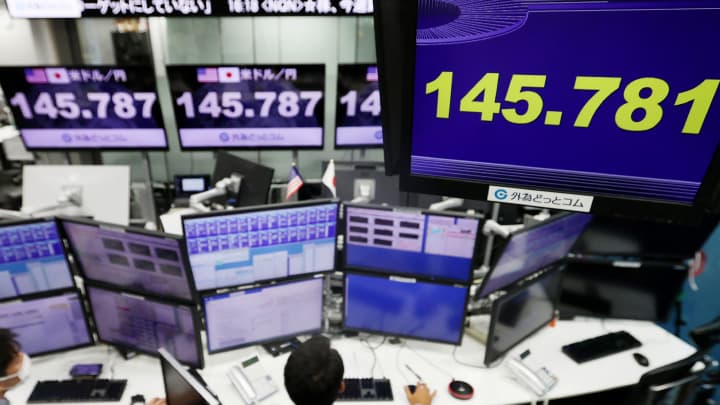
The BOJ had in July to broaden the permissible range for 10-year Japanese government bond yields of around plus and minus 0.5 percentage points from its 0% target to 1% in Governor Kazuo Ueda's first policy change since assuming office in April.
Yield curve control, the so-called YCC, is a policy tool where the central bank targets an interest rate, and then buys and sells bonds as necessary to achieve that target.
Economists have been watching for more changes to the BOJ's yield curve control policy, part of the Japanese central bank's efforts to reflate growth in the world's third-largest economy and sustainably achieve its 2% inflation target after years of deflation.
Expectations of a quicker exit from the BOJ's ultra-loose monetary policy spiked after in an interview published Sept. 9 that the BOJ could have sufficient data by the end of this year to determine when to end negative rates.
After that report, many economists brought forward their forecasts for policy tightening to sometime in the first half of 2024.
Central bank officials have been cautious about exiting its ultra-loose policy, even though core inflation has exceeded the BOJ's stated 2% target for 17 consecutive months.
This is due to what the BOJ sees as a lack of sustainable inflation, deriving from meaningful wage growth that it believes would lead to a positive chain effect supporting household consumption and economic growth.
But there are inherent risks when the BOJ finally decides to tighten rates.
"Japan has been the mother of the carry trade for decades now and so much capital has been funded at a very low cost in Japan and exported to foreign markets," Michele said.
With 10-year JGB yields hitting its highest in a decade at about 0.745% Thursday, Japanese investors have been starting to unwind positions across various asset classes in various foreign markets that used to offer better returns in the past.
"I worry as the yield curve normalizes and rates go up, you could see a decade — or longer — of repatriation," he added. "This is the one risk I worry about."

